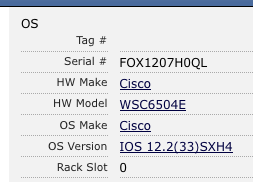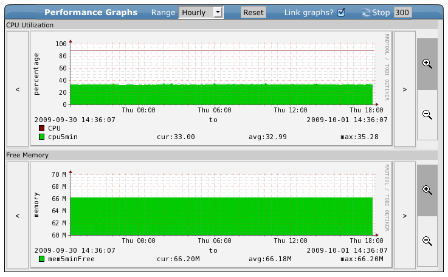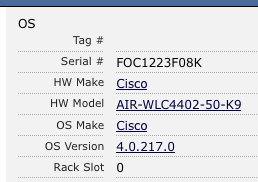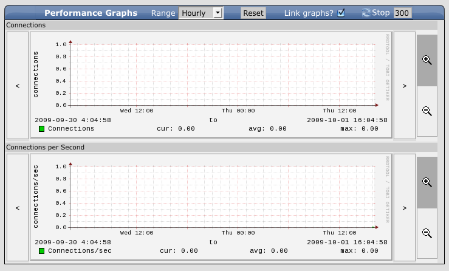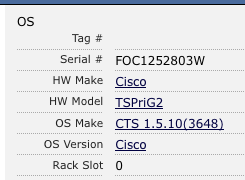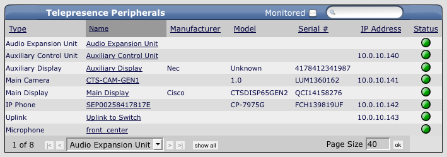You should place Cisco devices running IOS in the /Devices/Network/Cisco device class. This lets them benefit from these extended monitoring capabilities:
Modeling of hardware serial number. This information can be found on the Status tab of Cisco IOS devices.
Monitoring of CPU and memory utilization. This information can be found on the Perf tab of Cisco IOS devices.
Modeling and monitoring of IP-SLA (RTTMON). This information can be found by selecting → from Cisco IOS devices' menu.
Modeling of stacked switch modules. This information can be found by choosing → from Cisco IOS devices' menu.
You should place Cisco Catalyst devices running CatOS in the /Network/Cisco/CatOS device class. The only difference in this class is that the CPU and memory performance monitoring is done by using a different configuration. Otherwise, the devices are treated the same as IOS devices.
You should place Cisco ASA, FWSM, and PIX devices in the /Network/Cisco/ASA device class. The only difference in this class is that the CPU and memory performance monitoring is done by using a different configuration. Otherwise, the devices are treated the same as IOS devices.
Zenoss can encounter problems when querying Cisco PIX, ASA, and FWSM devices using SNMP. This is because, by default, Zenoss tries to fit forty requests into a single SNMP packet when using SNMP v2c. This improves performance and reduces network and processing overhead on Zenoss and the monitored device.
Common symptoms of this problem include:
DEBUGlevel/Perf/Snmpevents with a summary field ofError reading value for "???"Missing performance graphs.
Errors similar to this that appear in the Cisco device log:
incoming SNMP request (? bytes) from IP address ?.?.?.? Port ? Interface "inside" exceeds data buffer size, discarding this SNMP request.
You should place Cisco Wireless LAN Controllers in the /Network/Cisco/WLC device class. This lets them benefit from the following extended monitoring capabilities:
Modeling of hardware model, serial number and operating system. This information can be found on the Status tab of wireless LAN controller devices.
Modeling of individual access points controller by the wireless LAN controller. This information can be found on the Wireless tab of wireless LAN controller devices.
You should place Cisco ACE (Application Control Engine) devices in the /Network/Cisco/ACE device class. This lets them benefit from the following extended monitoring capabilities:
You should place Cisco Telepresence Codec devices in the /Network/Cisco/Codec device class. This lets them benefit from the following extended monitoring capabilities:


